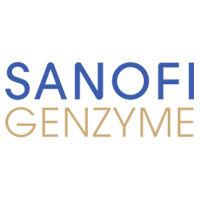预约演示
更新于:2025-10-16

North Sichuan Medical College
更新于:2025-10-16
概览
标签
肿瘤
其他疾病
内分泌与代谢疾病
小分子化药
化学药
放射与诊断药物
疾病领域得分
一眼洞穿机构专注的疾病领域
暂无数据
技术平台
公司药物应用最多的技术
暂无数据
靶点
公司最常开发的靶点
暂无数据
| 排名前五的药物类型 | 数量 |
|---|---|
| 小分子化药 | 4 |
| 化学药 | 1 |
| 放射与诊断药物 | 1 |
关联
6
项与 川北医学院 相关的药物作用机制 BRK抑制剂 [+6] |
在研机构 |
原研机构 |
在研适应症 |
最高研发阶段批准上市 |
首次获批国家/地区 美国 |
首次获批日期2011-04-06 |
作用机制 TREK1刺激剂 [+1] |
非在研适应症- |
最高研发阶段临床前 |
首次获批国家/地区- |
首次获批日期- |
36
项与 川北医学院 相关的临床试验ChiCTR2500104449
The Effects of Dignity Therapy on Dignity, Hope, Depression, and Treatment Adherence in Patients with End-Stage Renal Disease
开始日期2025-06-25 |
申办/合作机构  川北医学院 川北医学院 [+1] |
ChiCTR2500098601
Single-arm, single-center, exploratory clinical trial of AK112 combined with mFOLFOX6 chemotherapy for neoadjuvant treatment of locally advanced rectal adenocarcinoma
开始日期2025-03-01 |
申办/合作机构 川北医学院附属医院 [+2] |
NCT06909604
Al18F-HER2-BCH PET/CT to Predict Response in Breast Patients Treated With Neoadjuvant Therapy
To use the molecular PET radionuclide (F-18) labelled HER2 Affibody to evaluate the predictive and prognostic value in breast patients treated with neoadjuvant therapy
开始日期2025-01-01 |
申办/合作机构  青岛大学附属医院 青岛大学附属医院 [+1] |
100 项与 川北医学院 相关的临床结果
登录后查看更多信息
0 项与 川北医学院 相关的专利(医药)
登录后查看更多信息
2,370
项与 川北医学院 相关的文献(医药)2026-02-01·Forensic Science International-Genetics
Potential application of hair shaft for human identification by mRNA polymorphism
Article
作者: Yan, Jiangwei ; Liu, Jinding ; Zhang, Gengqian ; Du, Bing ; Yang, Hailing ; Zhang, Yuxin
Recently, RNA has shown great potential for use in forensic genetics. Our previous work indicated that hair shafts possess detectable RNA levels. Fallen hair samples at crime scenes are common, but human identification is difficult because of the degeneration of traceable nuclear DNA. We aimed to establish a new mRNA polymorphism assay for the identification of hair shafts in humans. In this study, we utilized polymorphic mRNAs to obtain a human identification profile that is more detailed than that of any previously reported method. Ten to fifteen pieces of 5-cm hair shafts were used to extract total RNA from 40 individuals. RNA was transcribed into cDNA and typed on a BGISEQ T7 platform using a massively parallel sequencing assay encompassing 404 coding region and untranslated region (UTR) single nucleotide polymorphisms (SNPs) from 78 genes. The multiplex assay was evaluated for sensitivity, species specificity, capability for aged hair shafts, consistency of the typing results for hair borne from different body parts, and genomic DNA (gDNA)/mRNA of the same individual. We also obtained the genetic parameters for human identification in a Chinese population. Genes that did not meet this threshold were excluded from the analysis. Ultimately, 71 genes containing 284 SNPs, amplified with 228 amplicons were retained. Polymorphisms were observed in 210 amplicons. The random match probability (RMP) values ranged from 1.24 × 10-44 to 1.14 × 10-72 (median = 4.36 × 10-50). When one piece of 5-cm hair shaft was used, 70.31-72.05 % of the amplicons could be detected, and 46.72-62.01 % of the amplicons showed the same genotype as 15 pieces of hair shafts. A total of 44-82 amplicons were detected in hair shafts from four common animals (cats, dogs, rabbits, and rats). However, the genotyping of most SNP/microhaplotype (MH) markers was inconsistent with the database records. This study provides a new strategy for human identification of hair shafts.
2026-01-01·JOURNAL OF AFFECTIVE DISORDERS
Comment on “Associations between sleep, obesity, and mental health in adolescents: Understanding sex-specific vulnerabilities”
Letter
作者: Liu, Ruining ; Yang, Dajun ; Ke, Xiong
2026-01-01·JOURNAL OF ETHNOPHARMACOLOGY
Magnoliae Officinalis Cortex volatile oil alleviated asthma via dual cAMP-mediated pathways: Anti-Inflammation and Bronchodilation
Article
作者: Sun, Jiayao ; Peng, Fu ; Liu, Lin ; Ao, Hui ; Tang, Fei ; Li, Kedi ; Liu, Ruizhi ; Peng, Cheng ; Cao, Zhangjing ; Wen, Xinya
ETHNOPHARMACOLOGICAL RELEVANCE:
Magnoliae Officinalis Cortex, a commonly used Chinese medicinal herb, has a long history in traditional East Asian medicine and is widely employed in the treatment of gastrointestinal disorders, asthma, depression, and other ailments. However, the potential of volatile oil derived from the bark of Magnolia officinalis Cortex (MVO) in asthma treatment remains to be determined.
AIM OF THE STUDY:
This study aimed to explore the therapeutic effect of MVO on asthma and to explore its pathway and molecular mechanism under cAMP signal background.
METHODS:
This study combined GC-MS with in vivo and in vitro experiments to elucidate the anti-asthmatic mechanism of MVO. An OVA-induced asthma model was established to evaluate the therapeutic effect of MVO via pulmonary function tests, H&E, BALF inflammatory cell counting, and ELISA. Fluo-4 AM, immunofluorescence and WB were further used to explore the underlying mechanism. In vitro, isolated tracheal rings were used as the object, and contraction models were constructed with KCl and acetylc holine to observe the relaxatory effect of MVO. Nifedipine (an L-type calcium channel blocker) and Pyr3 (a TRPC3 channel inhibitor) were used to intervene in the calcium signaling pathway, and the involvement of the cAMP pathway was analyzed by detecting cAMP level.
RESULTS:
GC-MS analysis identified high concentrations of α-eudesmol, β-eudesmol, γ-eudesmol, and o-cymene in MVO. In vivo experiments showed that MVO reduced OVA-induced inflammatory cell infiltration and mucus secretion, improved pulmonary function, decreased Th2-type cytokines in BALF and serum IgE level, up-regulated the level of cAMP and the expressions of p-PKA/p-CREB in lung tissues, and inhibited NF-κB activation, reducing Ca2+ level and membrane localization in lung tissues. In vitro experiments showed that MVO could relax tracheal smooth muscle contractions induced by KCl and ACh in a dose-dependent manner. Application of nifedipine and Pyr3 confirmed that MVO exerted its relaxant effect by blocking L-VDCC and NSCC/TRPC channels.
CONCLUSION:
MVO attenuated airway hyperresponsiveness by modulating the cAMP/PKA/CREB pathway, which subsequently suppressed NF-κB-driven inflammatory responses, while concurrently restoring cAMP/Ca2+ homeostasis. Significantly, our study demonstrated a novel dual-action therapeutic strategy targeting cAMP for asthma, bridging bronchodilatory and anti-inflammatory effects.
9
项与 川北医学院 相关的新闻(医药)2025-07-16
·丁香园
近日,川北医学院的 2022 级同学罗某某因「过于优秀」的简历,在网上受到了关注。据网传图片显示,罗某某「担任多个顶级期刊审稿人,以第一作者或第一通讯作者在自然·机器学习、JAMA 内科学等顶级期刊发表 SCI 论文 7 篇,个人累计影响因子 149。」还获有「A 类国家级竞赛一等、二等奖若干,目前参与北京大学,美国克利夫兰医学中心,协和医学院等院校合作」等。图源:社交媒体PPT 中还列举了在 2024 年期间,该同学以第一作者、共同作者、唯一通讯作者等身份参与的十余篇论文,涉及「柳叶刀」「自然」「JAMA」在内的众多学术界顶级期刊和杂志。据川北医学院微信公众号显示,罗某某就读于该校口腔医学院,是 2022 级学生。2025 年 5 月,他曾获学校 2024 年度青年五四奖章,在获奖介绍中提到,他有国家级 A 类竞赛奖项 4 项,省级奖项 6 项。计算机应用协会副会长。国家发明专利 3 项, 发表 SCI 数篇,软件著作权数篇,在校期间获得昌华奖学金等 44 项荣誉……在社交媒体检索发现,疑似罗某某的 PPT 内容引起了不少讨论。B 站知名 UP 主还发布了视频《学弟,学长可以读您的博士吗?》的视频,播放量达到 41.6 万。在 Pubmed 上搜索可以发现,罗某某已经发表数篇高分文章。图源:Pubmed 网页截图其中发表于 JAMA 内科学的 2 篇文章为 Comment & Response,胸腔肿瘤学杂志的文章为 Letters to the Editor,罗某某在这三篇文章中作为通讯作者。在发表于 Nature 子刊的文章中,罗某某作为第一作者。其引争议的地方还在于,在这篇文章致谢部分,文章的指导老师去世了,而罗某某在此求爱。图源:Nature 官网7 月 15 日下午,川北医学院有关负责人回复封面新闻记者,「目前学校已经关注到相关信息,正在核查中。」策划:zhujiojio|监制:z_popeye信息来源:封面新闻、社交媒体丁香园招聘新媒体运营(丁香园公众号)点击直接投递也可将简历投至邮箱 niyj@dxy.cn邮件标题:新媒体运营 - 姓名,请将既往作品附在邮件中丁香园社区运营(点击直接投递)也可将简历投至邮箱 niyj@dxy.cn邮件标题:社区运营 - 姓名,请将既往作品附在邮件中丁香园是面向医疗从业者的专业平台,以「助力中国医生」为己任。在丁香园,可以和同行讨论病例 ,在线学习公开课,使用用药助手等临床决策工具,在丁香人才找可靠医疗岗位。
2025-07-07
·医脉通
今天的医疗圈发生了哪些与你有关的大事?更新、更全的医学动态3分钟一网打尽********今日关键词:互联网健康科普乱象,医学院更名,慢性铅中毒来源 | 医脉通作者 | 晚报君新闻60秒➤国家卫健委:不要轻信“网红医生” @央视新闻客户端 国家卫生健康委7月4日在北京举行新闻发布会,新闻发言人胡强强表示,国家卫健委将与相关部门一起,加大互联网健康科普乱象的整治力度。 胡强强指出,当前,医疗科普是短视频平台的热门话题,越来越多的医生通过直播和短视频来传播健康科普知识。但是有的“网红医生”把医疗科普当作牟利工具,滥用专业权威为自己背书,假借科普名义违规导医导诊,线上问诊,线下引流,直播带货甚至高价开药;还有的通过夸大治疗效果、虚构病例、杜撰故事等手段误导公众、敛财牟利。 胡强强提示,这些行为严重违反了互联网诊疗管理和广告管理相关的法律法规,请公众不要轻信,防止上当受骗。胡强强介绍说,下一步,国家卫健委将与相关部门一起,加大互联网健康科普乱象的整治力度,维护民众的健康权益。 ➤又一家老牌医学院将更名医科大学 @南充市人民政府、南充日报 据南充市人民政府官网,7月1日,南充市政府副市长、川北医学院更名大学工作专班校区建设组组长欧阳梅在川北医学院项目指挥部主持召开川北医学院更名大学工作专班校区建设组第十二次会议。会议指出,新校区建设历经近一年三个月圆满收官,是多方协作的成果。会议强调,新校区建成是里程碑更是新起点。要锚定医科大学升格目标,全面补齐师资队伍、科研水平等短板;学校精心做好搬迁预案。 据了解,此前学校在人民网领导留言板回复网友问询时曾表示:学校初步确定更名医科大学的校名为“川北医科大学”。 ➤因变相分配收益,一家三甲医院被处罚 @“看医界”微信公众号 近日,平顶山市卫生健康委员公示了对某大型三甲医院的行政处罚,其中一项违法事实是“医院向出资人变相分配收益”,被罚款5万。公开资料显示,该医院是一家企业医院,为三级甲等综合医院,医院是企业办非营利性医院,开放床位近3000张,拥有员工超3000人。据了解,以“向出资人变相分配收益”被处罚的医院,并不是个例。据知名医改专家徐毓才介绍,非营利性医疗机构就是不以营利为目的的医疗机构,其收入用于弥补医疗服务成本。政策60秒➤国家药监局:十方面举措支持高端医疗器械创新发展 @国家药监局 7月3日,国家药监局发布公告,针对医用机器人、高端医学影像设备、人工智能医疗器械和新型生物材料医疗器械等高端医疗器械,提出优化特殊审批程序、完善分类和命名规则、持续健全标准体系、进一步明晰注册审查要求等十方面支持举措,旨在促进更多新技术、新材料、新工艺和新方法应用于医疗健康领域,提升我国高端医疗器械国际竞争力。健康60秒➤甘肃一幼儿园多名幼儿血铅异常引关注,专家怀疑系“慢性铅中毒” @央视新闻 7月1日,麦积区市场监管局和公安分局接群众反映,查获一起某幼儿园违规使用添加剂导致部分幼儿血铅异常案件。相关专家和有关部门组成联合工作组,快速开展流调溯源、医疗保障及调查处置等工作。目前,对血铅异常幼儿的医治和营养干预、心理疏导等工作正在科学有序进行。已对涉事幼儿园负责人立案侦查。 @封面新闻 儿童铅中毒防治专家、上海交通大学医学院附属新华医院儿科学教授颜崇淮表示,从临床表现、血铅水平和过往案例来看,可能是一个慢性铅中毒(超过3个月),孩子体内的铅绝大多数可能沉积进入了骨骼系统,治疗时血铅下降,停药后血铅还会反弹,一般要重复若干疗程以后,血铅不再反弹了,才会停止驱铅治疗。同时,他指出,铅的神经发育毒性可以说是不可逆的,也就是即使通过治疗,血铅恢复正常了,但智商很难恢复到原来应有的水平。 ➤最新!新增新冠重症384例、死亡8例…… @中国疾病预防控制中心 7月5日,中国疾病预防控制中心日前发布6月份全国新型冠状病毒感染疫情情况。情况通报,今年6月份,全国31个省(自治区、直辖市)及新疆生产建设兵团报告新增确诊病例333229例,其中重症病例384例、死亡病例8例(均为基础疾病合并新冠病毒感染死亡病例),疫情呈波动下降趋势。责编|Atai封面图来源|医脉通重磅!两部门联合发文支持创新药,将给医生带来怎样的挑战?降薪潮下,医护正在迎来职业危机医脉通是专业的在线医生平台,“感知世界医学脉搏,助力中国临床决策”是平台的使命。医脉通旗下拥有「临床指南」「用药参考」「医学文献王」「医知源」「e研通」「e脉播」等系列产品,全面满足医学工作者临床决策、获取新知及提升科研效率等方面的需求。☟戳这里,更有料!
专利到期
2025-01-21
TUESDAY, Jan. 21, 2025 -- Hormone replacement therapy to ease
menopause
symptoms doesn’t increase a woman’s risk of brain tumors.
Researchers found no link between hormone therapy and gliomas, the most common brain tumors in adults, according to results of a new study published recently in the journal
Menopause
.
“Compared with nonusers, users of hormone therapy were not significantly associated with glioma risk,” a team led by senior researcher
Dr. Hui Tang
, a neurosurgeon with North Sichuan Medical College in Nanchong, China, wrote.
No link was found even when researchers considered how long a woman had been taking hormone therapy, and whether she was currently using it.
“Although there is a known sex difference in the incidence of gliomas, with women being six times more likely to develop the disease compared with men, there does not appear to be an association between glioma and hormone therapy use in postmenopausal women,”
Dr. Stephanie Faubion
, medical director for The Menopause Society, said in a news release.
Hormone therapy is prescribed to treat common menopause symptoms like hot flashes, night sweats, mood swings and vaginal problems, researchers mentioned in background notes.
The therapy had been widely used until 2002, when early clinical trial results showed an association between hormone therapy and increased risk of breast cancer, heart disease, stroke and blood clots.
Since then,
further study
has shown that hormone therapy is indeed safe for treatment of menopause symptoms, but is unlikely to decrease risk for age-related health problems like heart disease or hip fractures.
This new study set out to check one of the remaining concerns about hormone therapy and how it might increase risk of brain cancer in women.
Some experts had speculated that women’s naturally higher risk of glioma might be linked to female hormones like estrogen.
For this study, researchers analyzed data from more than 75,000 women between 50 and 78 years of age participating in a long-term cancer screening study. The women were tracked for an average 12 years.
The results found that women using hormone therapy had no increased risk of gliomas, even if they’d been taking it for a while.
But researchers said their findings should be verified in larger studies with more extended follow-up periods.
Whatever your topic of interest,
subscribe to our newsletters
to get the best of Drugs.com in your inbox.
临床结果
100 项与 川北医学院 相关的药物交易
登录后查看更多信息
100 项与 川北医学院 相关的转化医学
登录后查看更多信息
组织架构
使用我们的机构树数据加速您的研究。
登录
或

管线布局
2025年12月22日管线快照
管线布局中药物为当前组织机构及其子机构作为药物机构进行统计,早期临床1期并入临床1期,临床1/2期并入临床2期,临床2/3期并入临床3期
药物发现
2
4
临床前
登录后查看更多信息
当前项目
| 药物(靶点) | 适应症 | 全球最高研发状态 |
|---|---|---|
Compound 3h (North Sichuan Medical College) ( MAO-B ) | 帕金森病 更多 | 临床前 |
W-POM NCs ( CagA x NIF ) | 脑出血 更多 | 临床前 |
ML-335 ( TREK1 x TREK2 ) | 痛风 更多 | 临床前 |
凡德他尼 ( BRK x EGFR x Eph x RET x SRC family x Tie-2 x VEGFR ) | 食管鳞状细胞癌 更多 | 临床前 |
CN120208951 专利挖掘 | 肿瘤 更多 | 药物发现 |
登录后查看更多信息
药物交易
使用我们的药物交易数据加速您的研究。
登录
或

转化医学
使用我们的转化医学数据加速您的研究。
登录
或

营收
使用 Synapse 探索超过 36 万个组织的财务状况。
登录
或

科研基金(NIH)
访问超过 200 万项资助和基金信息,以提升您的研究之旅。
登录
或

投资
深入了解从初创企业到成熟企业的最新公司投资动态。
登录
或

融资
发掘融资趋势以验证和推进您的投资机会。
登录
或

生物医药百科问答
全新生物医药AI Agent 覆盖科研全链路,让突破性发现快人一步
立即开始免费试用!
智慧芽新药情报库是智慧芽专为生命科学人士构建的基于AI的创新药情报平台,助您全方位提升您的研发与决策效率。
立即开始数据试用!
智慧芽新药库数据也通过智慧芽数据服务平台,以API或者数据包形式对外开放,助您更加充分利用智慧芽新药情报信息。
生物序列数据库
生物药研发创新
免费使用
化学结构数据库
小分子化药研发创新
免费使用


